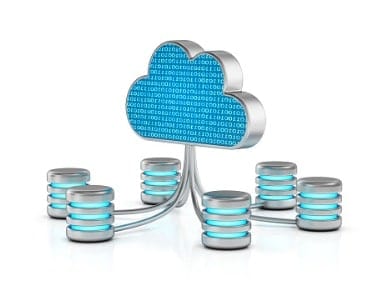Customer MDM (Master Data Management)
Unlocking the Single Customer View to Drive Hyper-Personalization and Agentic AI Success
You’ll hear the term “experience economy”, and what this really means, is that modern-day business success is fundamentally driven by the quality and personalization of the interactions and experiences delivered to customers.
For Customer Master Data Management (Customer MDM) the implications are quite profound. This means that in order for a business to provide customers with distinctive ‘experiences’ to drive growth, maintain compliance obligations, and enable sophisticated digital strategies., the tools and methods need to go beyond IT projects.
Master Data Management (MDM) more generally refers to the combination of technologies, tools, and processes used to create a consistent, accurate, and complete set of master data across an organization, but Customer MDM focuses with laser precision, on supporting the business in mastering the data related to the “customer” entity specifically, more particularly in the Business-to-Consumer (B2C) and Direct-to-Consumer (D2C) contexts.
Effective Customer MDM (CMDM) focuses on transforming the fragmented customer account and the hidden data gaps often found in data silos, into a single, unified, powerful commercial asset. The ideal situation being one where it connects, multiple data masters, and consolidates data from various systems—including ERP, CRM, and ecommerce platforms—to establish a unified, reliable source of customer information for controlled distribution and use. This authoritative view is the foundation (Golden Records) for creating personalized experiences that customers expect and enabling advanced technologies like Agentic AI.
The Core Principle: Achieving the Single Customer View (SCV)
The primary goal of Customer MDM is to create the Single Customer View (SCV), also known as the 360° Customer View, or the customer Golden Record. Such a record consolidates the essential, business-critical information about a customer from every touchpoint and system across the enterprise. Without an SCV, organizations risk using inaccurate or incomplete data in crucial interactions, which can jeopardize new sales or existing relationships.
Integration and Consolidation
Master data management systems enable data integration by connecting to any data source, anywhere, bringing data together in one place. For customer data, this involves integrating records from omnichannel transactions, customer interactions, social media, and transactional systems. Multidomain MDM platforms are designed to connect customer data alongside other critical domains—like product and location—in a single environment. This ability to connect data across silos is crucial for gaining holistic insights.
Matching and Identity Resolution (Deduplication)
Fragmented customer data often often leads to duplicated customer accounts. MDM systems address this by applying sophisticated matching, reconciliation, and entity resolution processes to eliminate redundancy and identify relationships among data points. Modern MDM leverages Artificial Intelligence (AI) and machine learning to find and resolve matches at a massive scale, moving beyond the limitations of legacy systems. This automation ensures data is clean and consistent. The master record, once created, is maintained through the ongoing process of cleansing, transforming, and integrating new data to ensure continued consistency.
Specific Nuances of Customer Data Quality
Customer data is inherently dynamic, requiring specific MDM capabilities to ensure its trustworthiness in real-time. High-quality, reliable data is essential for improved business decisions and outcomes.
Real-Time Data Quality and Validation
For customer data, the quality of the data is of paramount importance for operational efficiency and a greater likelihood of customer satisfaction. MDM systems deploy data cleansing, standardizing, and enriching tools to turn “dirty data” into organized, reliable information. Specific capabilities for customer data include Address Validation and Real-Time Data Quality checks. This constant vigilance minimizes errors, such as transposing characters or incomplete fields, and corrects for different name usages (e.g., Jim vs. James).
Data Enrichment for Context
MDM platforms allow for the enrichment of customer records, often by integrating with external or third-party data sources (Data as a Service) to provide rich context to customer profiles. For B2B customer data, this enrichment includes Firmographic Data and information on Business Partner Relationships. In the B2C space, enrichment helps refine precise customer personas and segmentation.
Data Governance and Compliance: Building Trust
Master data management is inseparable from Data Governance, the discipline of establishing and enforcing policies, standards, and rules to ensure data is accurate, reliable, and compliant. For customer data, governance is especially critical due to privacy concerns and regulatory requirements.
Enforcing Customer Data Governance
Governance involves setting up cross-functional teams (data stewards) and defining clear policies and standards for how customer data should be managed, updated, and shared. MDM systems help establish and enforce these policies, ensuring data security and compliance with various regulations.
Privacy and Consent Management (Drawing on external knowledge beyond the provided sources)
Customer MDM must extend beyond basic quality to handle sensitive personal information. (Based on industry standards for customer data handling, not explicitly detailed in the provided sources, the following point is added for comprehensive coverage in line with the query’s request): A robust Customer MDM solution integrates consent and privacy preferences directly into the golden record. This allows organizations to manage customer choices regarding communication channels, data sharing, and regulatory mandates, ensuring that marketing, sales, and service activities are always performed with legal and ethical authority.
Strategic Impact: Powering AI and Customer Experience
The value of Customer MDM ultimately lies in its ability to deliver connected, insight-ready data in real-time, laying the foundation for modern business operations and advanced analytics.
Enabling Hyper-Personalization and Loyalty
By providing a unified view of customer history and preferences across channels, MDM dramatically improves customer service. This single source of truth allows businesses to create hyper-personalized experiences that foster lasting customer loyalty. Without consistent, trusted data, attempts at personalization are often flawed. A complete customer profile ensures that account managers have all necessary information—product ownership, service items, and correct contact details—to facilitate effective sales and service conversations.
Fueling Agentic AI and Digital Transformation
MDM is increasingly powered by AI and machine learning. Conversely, the output of MDM—the trusted golden record—is essential for the success of AI tools, LLMs, and agentic AI workflows.
Agentic AI systems rely on the authoritative context provided by any master data available. When AI agents are tasked with autonomously interacting with customers or making business decisions (e.g., pricing recommendations, service routing, personalized campaign execution), they must operate on the highest quality data available. MDM ensures that the data inputs for these systems are governance-ready, reducing the risk of flawed AI outputs and enabling responsible AI implementation.
Summary of Customer MDM Advantages
Implementing a comprehensive Customer MDM solution delivers significant advantages:
- Drives Revenue Growth – By enabling hyper-personalized marketing and precise customer targeting.
- Enhances Customer Relations – Ensuring consistent, accurate experiences across all touchpoints.
- Improves Decision-Making – Providing a 360-degree view of the business to identify market trends and patterns.
- Facilitates Compliance – Reducing risk by ensuring all customer data meets stringent regulatory standards.
- Boosts Business Agility – Allowing the organization to respond quickly to market changes using real-time, standardized information.
Competitive advantage for business, hinges on the ability to know and serve the customer perfectly, Pretectum Customer MDM provides the necessary unified, connected, and accessible data to scale smarter, remain competitive, and future-proof the entire data strategy. #LoyaltyIsUpForGrabs





